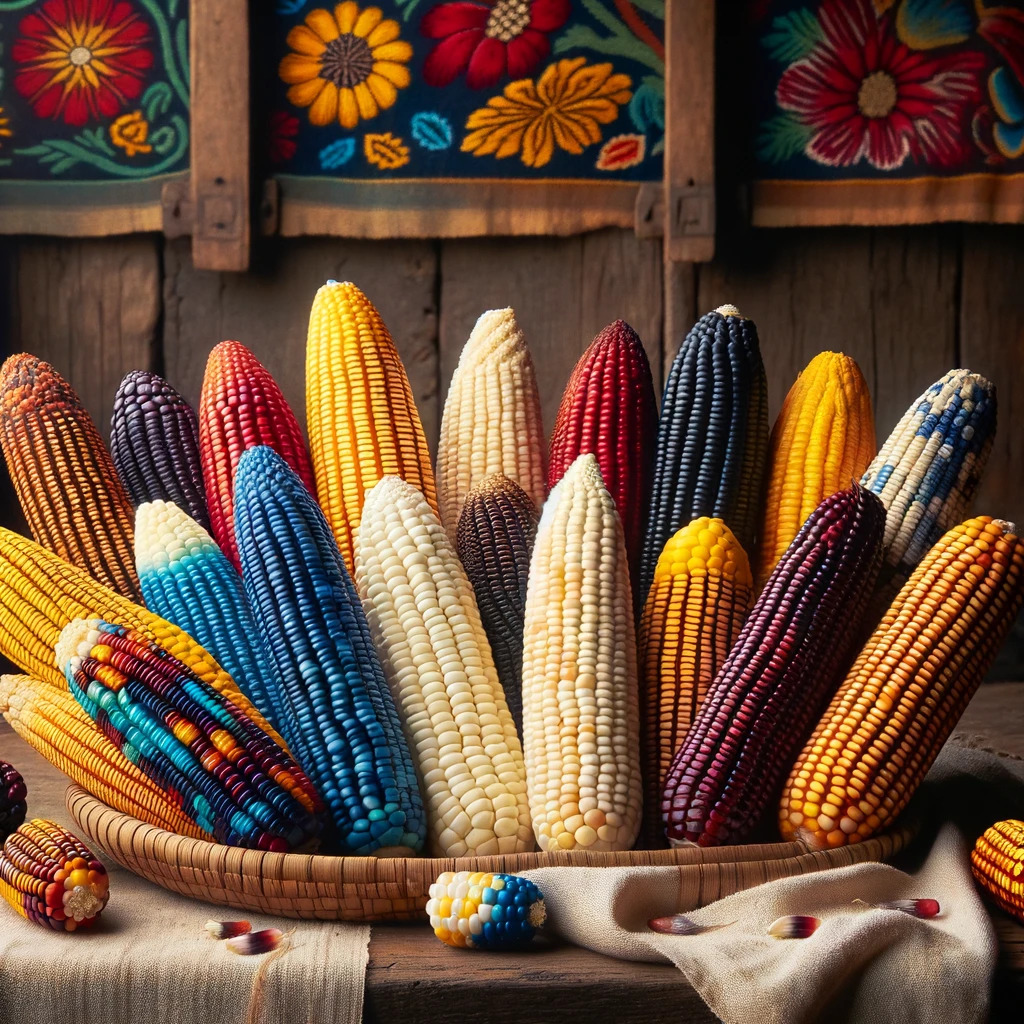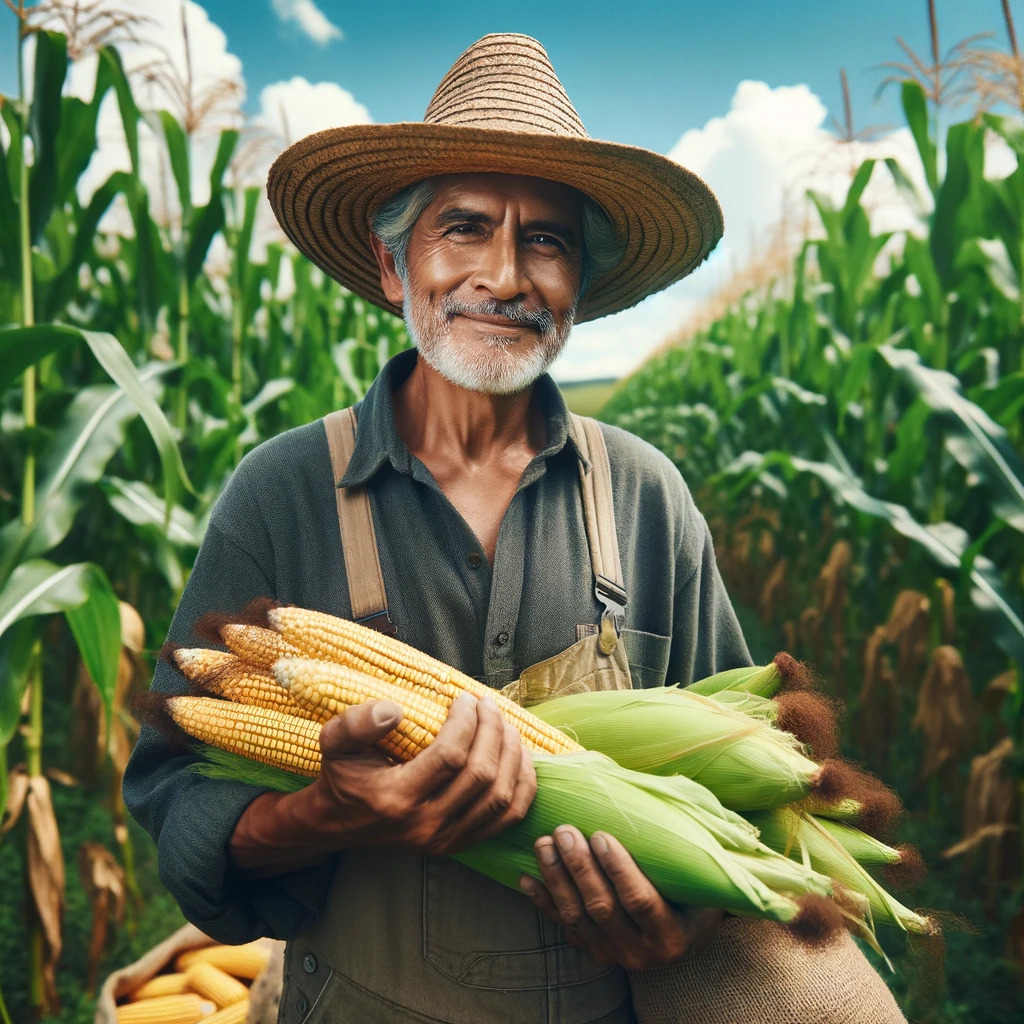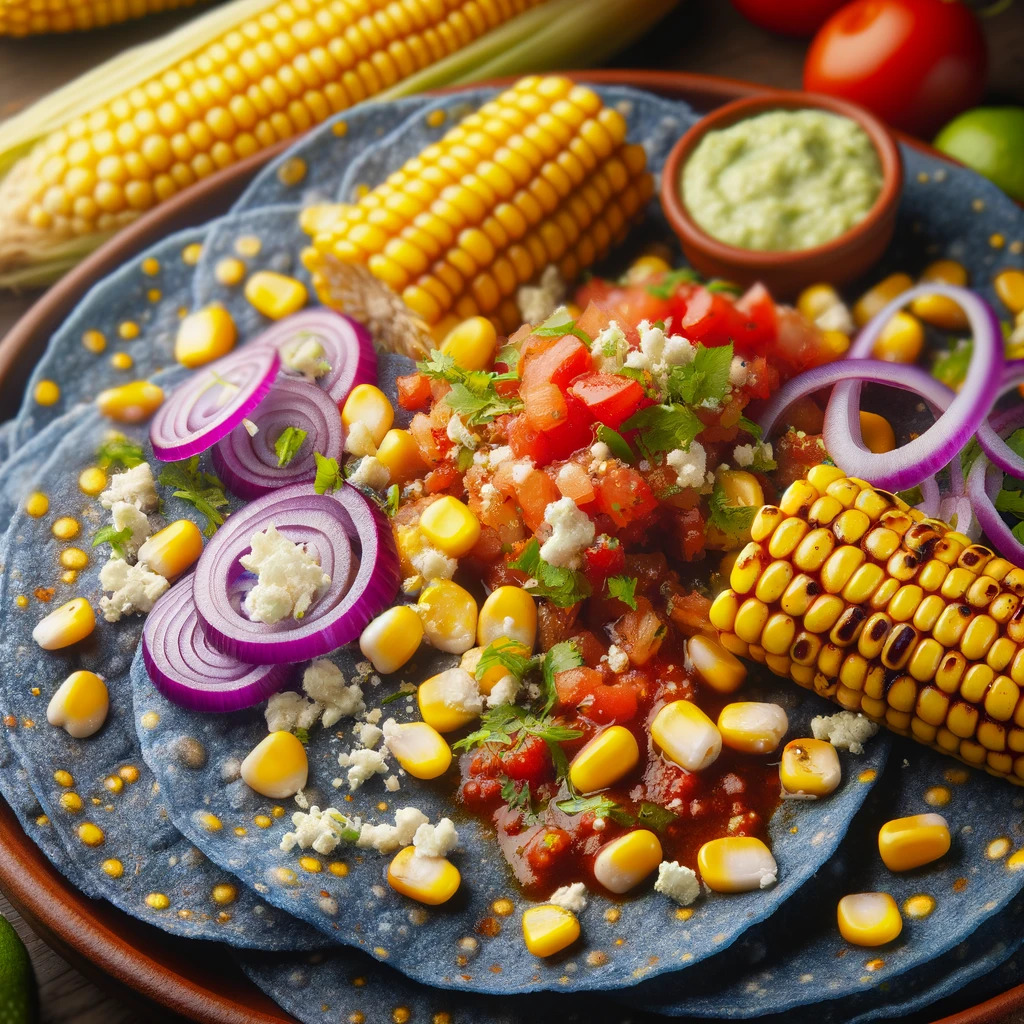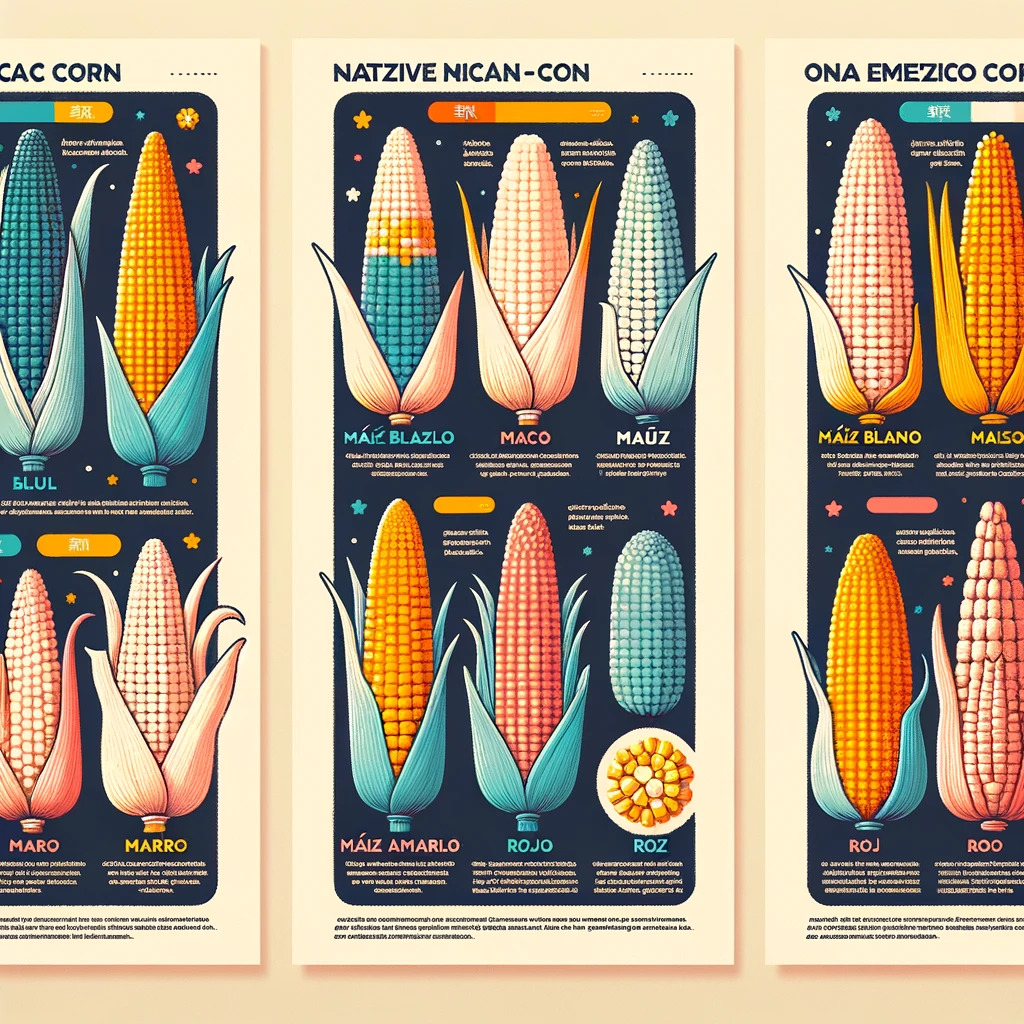Native Corn, the Heart of Mexico

Corn is not just a staple in Mexico; it’s a symbol of the country’s history and culture. With over 60 native varieties, Mexican corn represents unparalleled genetic and cultural wealth. This article explores the varieties of native corn in Mexico, highlighting their importance in agriculture, cuisine, and tradition.
History and Origin
Corn, first domesticated in what is now Mexico thousands of years ago, has been a cornerstone in the development of Mesoamerican civilizations. Each region of Mexico has cultivated varieties adapted to its specific climatic and cultural conditions, creating astonishing diversity.
Key Varieties of Native Corn
Blue Corn (Aztec Corn):
Cultivated mainly in central Mexico, it’s known for its distinctive color and use in tortillas and other dishes.
White Corn (Conical Corn)
Essential in daily diet, primarily used for tortillas and tamales.
Yellow Corn (Corn on the Cob)
Common in northern Mexico, it forms the basis for elotes and esquites.
Red Corn (Pigeon’s Blood Corn)
Valued for its nutritional properties and used in traditional regional dishes.
The Role of Corn in Sustainable Agriculture

Native corn agriculture in Mexico is based on sustainable and organic practices. These traditional methods, like milpa, not only preserve biodiversity but also maintain soil and ecosystem health.
Corn in Mexican Cuisine

Mexican cuisine is inconceivable without corn. From tortillas to atoles, native corn brings unique flavors and textures to the country’s cuisine. Each variety of corn contributes a distinct flavor, enriching the diversity of Mexican dishes.
Challenges and Conservation
Preserving native corn varieties faces challenges due to globalization and competition from commercial varieties. Conservation initiatives aim to protect these native breeds to maintain biodiversity and food security.
Conclusion: Corn, a Living Heritage of Mexico

Mexico’s native corn is more than just a crop; it’s a living legacy of the country’s rich history and culture. Its preservation is essential to protect this invaluable heritage for future generations.
 AgronoBlog – Agriculture Blog
AgronoBlog – Agriculture Blog 


